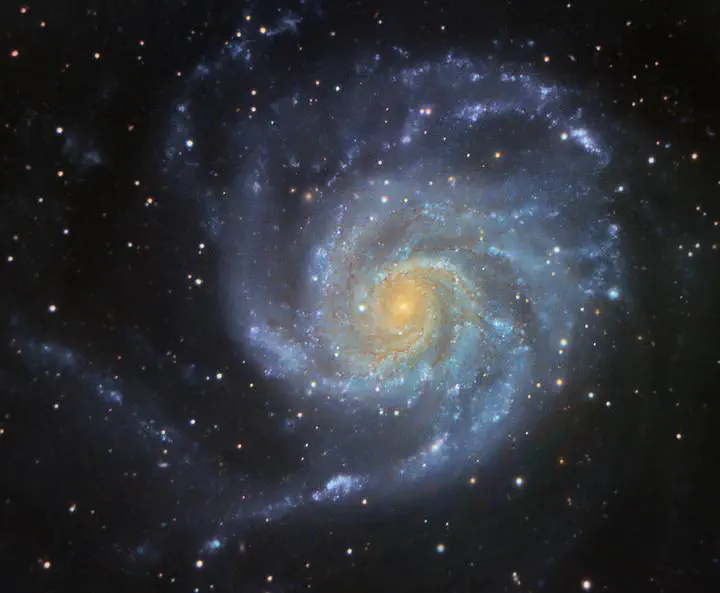Investigating the M101 Group with Deep Narrowband Imaging
 M101. Image Credit: antares9000
M101. Image Credit: antares9000Abstract
I present deep, narrowband imaging of the nearby spiral galaxy M101 and its environment in a series of projects investigating its star-forming properties, metallicity distribution, and evolutionary history. The M101 Group, although being a relatively poor group with only one major member, is a dynamically active group. M101 itself is thought to have had a recent encounter with its most massive satellite NGC 5474. Using narrowband images targeting key emission lines (Hα, Hβ, [OIII]λλ4959,5007, and [OII]λ3727), I can investigate how this interaction might have propagated throughout the M101 Group and within the individual galaxies themselves.
In the first project, I searched for extragalactic star-forming regions in the M101 Group as these objects may be isolated star-forming events tracing the tidal debris from the interaction. After carefully removing stellar contaminants and high-redshift background objects, I found that of the 27 objects found, almost none of them were outlying star forming regions or new star-forming dwarfs. This reaffirms that the interaction was likely a weak interaction, not prone to producing tidal debris.
In the second project, I used the complete spatial coverage of our narrowband images to estimate the oxygen abundances of the M101 Group. With three calibration techniques for the strong-line ratio R23, I estimated abundances for ~720 HII regions scattered across three galaxies, the most extensive sample of HII regions in the M101 Group to date. M101 shows a strong abundance gradient with some evidence for flattening beyond R ~ 15 kpc. I interpret these abundance patterns in the context of M101’s interaction history and the internal dynamics of its disk.
Finally, I present ongoing research using the same narrowband imaging dataset to study M101’s intermediate age stellar populations as well as the properties of the diffuse ionized gas throughout M101’s disk.